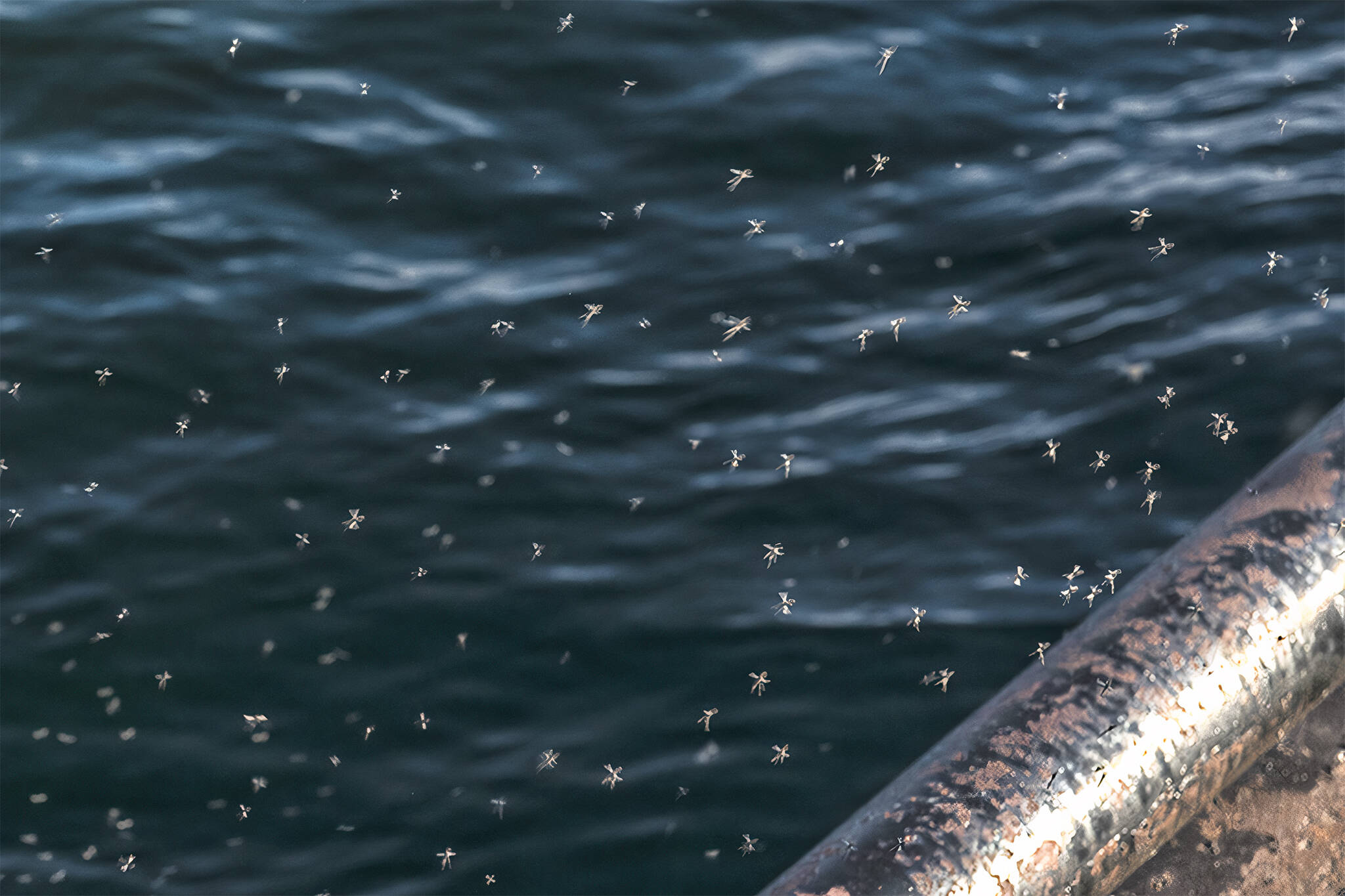
Pesky midges have taken over Toronto again
If your home has been inundated with little annoying flies in recent days, you're definitely not alone, because it's midge season once again in Toronto.
Anyone else in Toronto have midges all over the place the last couple days? Can't keep them out of my house. Literally Hoovering them by the dozen.
— Chet Wydrzynski (@realchet) September 29, 2020
Midges, which look a bit like a cross between fruit flies and mosquitoes, appear in swaths in both the spring and the fall each year, peskily crowding onto window screens, all over patios and around sliding glass doors.
Toronto is having a full on orgy of midges today. They're all over the balcony. 🤢 pic.twitter.com/mTNyYktYps
— 𝕋𝕙𝕖 𝔽𝕠𝕣𝕘𝕖 ☠ (@OldSchoolAnim8r) September 13, 2020
The harmless insects are of the non-biting variety, thankfully, and don't cause much trouble outside of being a nuisance (and making a bit of a mess when hundreds of their corpses pile up).
What are these gajillion tiny flies dying by the millions on my front porch.
— Angeline Tetteh-Wayoe (@MsAngelineTW) September 29, 2020
They are fond of water, though, which is why they're common in the city — especially by the lake, where they're known to collect and mate in swarms, exasperating unsuspecting runners and cyclists who end up covered in the little buggers.
Though they may not serve as the tastiest snack for humans, they are for local fish.
Is there any way to get rid of midges/no-see-um flies? Are these common this time of year in Toronto? There are just so many on our patio ceiling and windows. They also seem to bite :( https://t.co/8tXBXgAUJj
— AskTO Reddit (@asktoreddit) September 27, 2020
They also apparently have an affinity for light when freshly-hatched, like many bugs, and so tend to gravitate toward condo towers.
Hi Sarah....my condo in Toronto (17 floors up) gets these annoying bugs every year about now for a few weeks to a month...other owners complain too... they are not the quickest creatures and die easily....nothing I have done helps except wait it out and know you are not alone.
— Sonya Corkum (@sonyacorkum) September 24, 2020
Fortunately, the chironomids have a short life cycle and usually make their exodus within a few days, after sufficiently infuriating residents.
Honestly very rude of midges to invade balcony during a global pandemic.
— May Warren (@maywarren11) September 29, 2020
In the meantime, perhaps consider keeping your windows and doors closed, avoiding swampy areas and bodies of water, and holding your breath when you pass a cloud of them.
Ben Roffelsen Photography
Latest Videos
Latest Videos
Join the conversation Load comments







